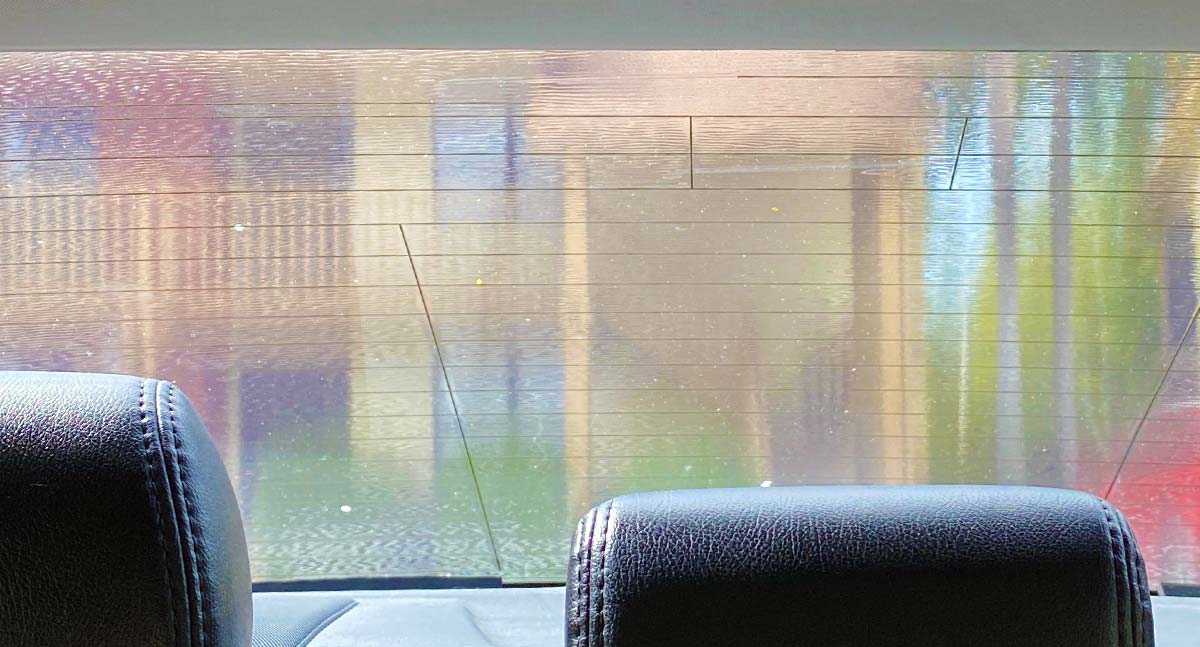
Window tinting is a popular choice for vehicle owners looking to enhance their car’s aesthetics and improve privacy. However, it’s not uncommon for drivers to experience blurry or cloudy windows after getting a tint job. In this article, we delve into the primary causes of blurry window tint and provide tips on what to expect after the installation process.
Understanding the Relationship Between Climate and Window Film Installation
During the window tinting process, installers use a squeegee to remove excess water between the film and the glass. However, some water remains, causing cloudiness or hazy appearance and even water pockets to form under the film. This is particularly the case when installing window tint during cold winter months. As the film dries, the trapped water evaporates, and the bubbles disappear.
The time it takes for the tint to dry completely depends on the installer’s skill, the amount of sunlight the car receives, and the type of film used. It typically takes anywhere from 3 days to 4 weeks for the film to dry, with overcast or cooler conditions prolonging the process.
Installation Haze: A Temporary Issue
Installation haze occurs when small water molecules are trapped between the film and the glass. As the film dries, these molecules evaporate, and the haze clears up. This temporary issue can be minimised by using a heat gun during application or making extra passes with a squeegee during installation. It is best to avoid applying additional stress on the windows during the curing period, such as rolling them up and down, and allowing them to remain closed until the film is fully cured.
Low-Angle Haze: A Different Type of Blurriness
Low-angle haze is a type of fuzziness that appears when looking through the windows at a steep angle, such as a windshield or a side window in front of the driver. This type of haze is more prevalent in some ceramic “nano dispersion” films. The irregular shape of the ceramic particles in these films can cause a disruption in light transmittance, leading to a blurry effect at low angles.
To address low-angle haze, consider using only premium-quality Ceramic films. These films feature sputter-coated titanium nitride particles, which form a more organised structure than the random orientation of dispersion films. This results in clearer windows and less low-angle haze.
Enhancing Window Tint Clarity with Proper Maintenance
Proper maintenance is essential for preserving the clarity and longevity of your window tint.
Here are some tips to help you maintain the quality of your window film:
- Wait for the film to cure before cleaning the windows. This prevents damage to the film and ensures the curing process is uninterrupted.
- Use a soft cloth and ammonia-free window cleaner to clean the tinted windows. Ammonia can damage the film, so avoid using products containing it.
- Avoid using abrasive materials, such as paper towels or rough sponges, which can scratch the film.
Conclusion
Blurry window tint is a common issue faced by drivers after a tint job. Understanding the primary causes, such as installation haze and low-angle haze, can help you manage your expectations during the curing process. By following proper maintenance guidelines and opting for high-quality window films, you can ensure clear and long-lasting window tint for your vehicle.

